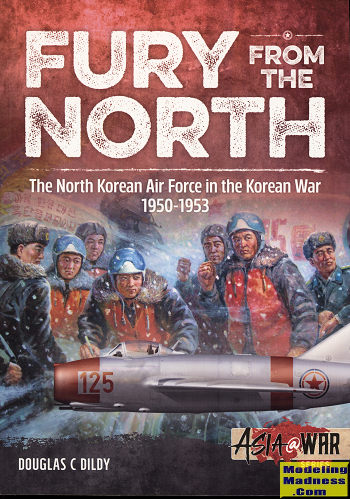 After
WWII, the Korean peninsula was divided pretty much as it is today, along the
38th parallel. The north and south were supposed to be united with free
elections choosing the leadership. However, this never came to pass with both
sides having leadership pretty well chosen by the controlling powers.
After
WWII, the Korean peninsula was divided pretty much as it is today, along the
38th parallel. The north and south were supposed to be united with free
elections choosing the leadership. However, this never came to pass with both
sides having leadership pretty well chosen by the controlling powers.
It was the desire of Kim Il Sung to forcefully unite the
two halves, but he could not do so without military help from the Soviet Union
and China. He was eventually given the OK after planning with both Moscow and
Beijing, but told to be patient regarding the date to start. He jumped the gun.
One of the main reasons he was told to wait was that he
did not have a fully trained air force. After WWII, little was available to
either North or South Korea in terms of aircraft other than leftover Japanese
stuff. Some of the initial pilots in the North Korean Air Force (NKAF) had
actually flown with the Japanese. But there were not enough pilots or aircraft
to make up a reasonable air force. After discussions with the Soviets and
Chinese, plans were made to have these nations provide training while the
Soviets provided piston driven aircraft; mostly Yak trainers, La-9/11 fighters
and IL-2/10 attack bombers.
However, training is not an instantaneous thing and
takes a goodly amount of time. Though a small force had been collected by June
1950, the pilots, for the most part, were not trained for war. Still, the NKAF
was in much better shape than the south's ROKAF which had little more than a few
T-6s and a handful of pilots. When the North invaded, the NKAF was actually
quite active and successful, especially as there was nothing in the air to
oppose them. The USAF did have some aircraft in Japan, but it took time to get
things organized and meanwhile the North rapidly advanced down the peninsula.
Once the USAF and British got forces in the area, their
air power was quite effective in destroying a goodly part of the NKAF on the
ground, but it never fully wiped the force out. Units were decimated only to be
reformed with newly supplied equipment. The NKAF basically moved north into
China from where it continued with operations, albeit nothing on the level of
the UN.
When the Chinese entered the war to push the UN forces
back down the peninsula, it allowed the NKAF to once again do some operations
from their former bases. The addition of Soviet and Chinese AF units that
entered the war were also a major concern, especially the Soviets for the
Chinese were not much better trained than the North Koreans. These latter forces
were not allowed to fly anywhere that a downed plane could be examined by UN
forces. Thus began 'MiG Alley'.
This book covers the operations of the North Korean Air
Force better than any other book I've read on the subject. Though the NKAF was
not a major player after the first few months, it was never out of the fight and
flew offensive operations throughout the war. Thanks to the sleuthing of the
author and his friends, we get a fascinating look into their functions during
the war. Of course, if the North Koreans would allow research into their
archives, a much better picture could be obtained, but through the use of
Russian, USAF, and CIA archives we know a lot more than before. I learned a huge
amount and had quite a few myths exposed as just that from reading this book.
Very highly recommended.
November 2019
Copyright ModelingMadness.com
Review book courtesy of
Casemate Publishing, where you can order your copy
at this
link.
If you would like your product reviewed fairly and quickly, please
contact
me or see other details in the
Note to
Contributors.
 After
WWII, the Korean peninsula was divided pretty much as it is today, along the
38th parallel. The north and south were supposed to be united with free
elections choosing the leadership. However, this never came to pass with both
sides having leadership pretty well chosen by the controlling powers.
After
WWII, the Korean peninsula was divided pretty much as it is today, along the
38th parallel. The north and south were supposed to be united with free
elections choosing the leadership. However, this never came to pass with both
sides having leadership pretty well chosen by the controlling powers.